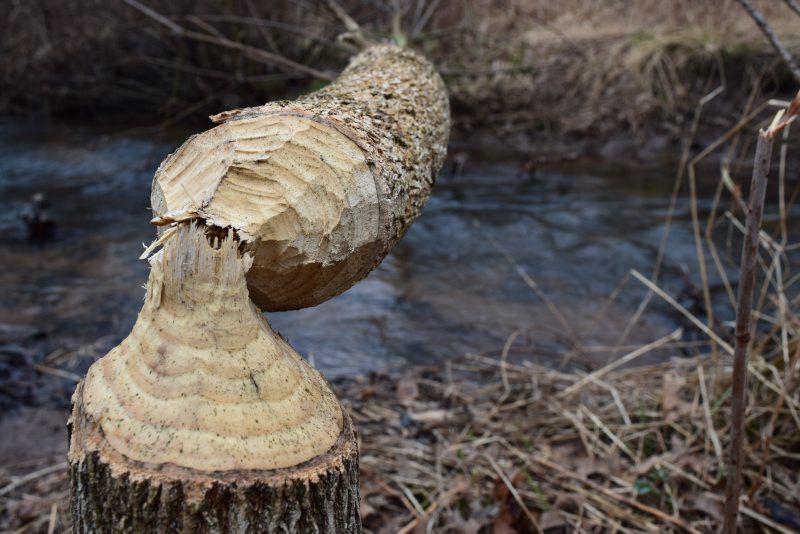You know sometimes, your hard work gets ignored or something you wrote and really feel proud of gets tossed aside as “grey literature”, or a program you really hoped would say good things advises folks that flow devices never work and they should eat beavers, and you think, maybe this is just too hard. Maybe saving beavers is too much work. Maybe it can’t be done or if it can be, it needs some one better than me to do it. And you think about throwing in the beaver towel once and for all.
And then you see something like THIS and it changes your whole attitude.

Draper homeowners fight to preserve backyard wetlands despite flood risks
DRAPER — Dozens of students from Oakwood Elementary gathered in the backyard of a Draper residence Friday to see a beaver dam that may soon disappear.
Kris and Kelly McAdams are hoping their backyard wetlands ecosystem can stay, despite calls to remove the natural beaver dams behind their home. While the McAdams see the wetlands as a beautiful feature that adds value to their property, Salt Lake County Flood Control officials are concerned that a failed beaver dam could clog man-made drainage downstream.
 “They say the beaver dams are unstable structures, although these have been here for at least 20 years and they have withstood hundreds of high-water events over that time,” Kelly McAdams said. “The dams are well-built here and rather than removing them, they could fortify them, and I suggested putting in a grate system downstream.”
“They say the beaver dams are unstable structures, although these have been here for at least 20 years and they have withstood hundreds of high-water events over that time,” Kelly McAdams said. “The dams are well-built here and rather than removing them, they could fortify them, and I suggested putting in a grate system downstream.”
Despite his assertions, county flood control officials worry that debris from the dams could flow down Willow Creek, clog a culvert and cause flooding to nearby homes.
Alyson Heyrend, communications director for Mayor Ben McAdams, said Salt Lake County’s Flood Control authorities have the responsibility of keeping streams and channels clear of any obstructions.
She said a compromise was offered to the property owners near the dams to support the wetland features while removing the dams, but Kris and  Kelly McAdams have maintained their opposition to the removal.
Kelly McAdams have maintained their opposition to the removal.
They have appealed the notice to remove the dams and have rejected the compromise offer, taking their case before an administrative law judge, who will rule in early May on whether the beaver dams will be removed.

Rep. Carol Spackman-Moss, D-Holladay, also arrived to lend her support to the property owners.
“ The county needs to look at the bigger picture, and see the effect that it would have on the wetlands,” Spackman-Moss said. “For these students to come out here and see what they have been studying and get a sense of the damage it would do and how this would all disappear, they would lose something so valuable.”Confe
The county needs to look at the bigger picture, and see the effect that it would have on the wetlands,” Spackman-Moss said. “For these students to come out here and see what they have been studying and get a sense of the damage it would do and how this would all disappear, they would lose something so valuable.”Confe
Spackman-Moss said the county would need to address the issue, and said council members for Salt Lake County ought to come see the property for themselves as they address property and public issues.
Confession coming: either tears of joy are streaming down my face or I just climaxed twice. (Or possibly both). Oh my goodness! This is POWERFUL stuff. Spackman-Moss is a democrat from the 37th district, life long teacher and grandmother. And the class full of fourth graders are FOURTH graders who wrote save the beavers on their hats!
I need to sit down.
In my conversation with Kelly on Saturday I had lots of praise for what he was doing. And two learned-the-hard-way pieces of advice. Have his attorney talk to Mitch, and BRING CHILDREN. “We didn’t know it would be so powerful” I told him truthfully. But it always is. Kelly’s a father with grown sons. But I told him to find some youth. Boy scouts, kindergarten, daisy princesses, and have Allison work with them to draw pictures, make hats, what ever activity that looks cute enough for the media to take photos of.
And guess what?
 Kelly you are doing an awesome, awesome job. I’m so impressed with your ability to pull this together, not get intimidated or overwhelmed and still seem so very reasonable. You are a credit to your state and a true kindred spirit of Martinez. I would only offer one criticism at all, and that is that last Earth day OUR hats were a little cuter. 🙂
Kelly you are doing an awesome, awesome job. I’m so impressed with your ability to pull this together, not get intimidated or overwhelmed and still seem so very reasonable. You are a credit to your state and a true kindred spirit of Martinez. I would only offer one criticism at all, and that is that last Earth day OUR hats were a little cuter. 🙂
Oh and for those who might be interested I sent these comments and corrections to the edible beaver program Outside/In yesterday. Felt good to get it off my chest and even if it changes no one’s mind, I dare say someone will definitely read it anyway.
proof







 So now you have PETA telling you to wrap trees and a whole lot more folks calling your office I bet. I know I spent my first hour of the day writing the editor, the parks and the mayor. Stories like this never fail to delight me. It’s like playing the same waltz grandma danced to when she was a girl.
So now you have PETA telling you to wrap trees and a whole lot more folks calling your office I bet. I know I spent my first hour of the day writing the editor, the parks and the mayor. Stories like this never fail to delight me. It’s like playing the same waltz grandma danced to when she was a girl. What? You mean there might be BENEFITS to having beavers in the area? You don’t say! Tell me more! This retired officer knows her stuff. I just wish I were a young student in Madison that could be hopping aboard this particular train and bringing some friends. Don’t you?
What? You mean there might be BENEFITS to having beavers in the area? You don’t say! Tell me more! This retired officer knows her stuff. I just wish I were a young student in Madison that could be hopping aboard this particular train and bringing some friends. Don’t you?
 Beavers are found across much of North America, almost anywhere there’s water and wood. They are well-established in most areas of Pennsylvania.
Beavers are found across much of North America, almost anywhere there’s water and wood. They are well-established in most areas of Pennsylvania. Dubbed beaver dam analogues, these structures can be built with hand labor. Even volunteers and children can get involved — no heavy machinery required.
Dubbed beaver dam analogues, these structures can be built with hand labor. Even volunteers and children can get involved — no heavy machinery required.




































